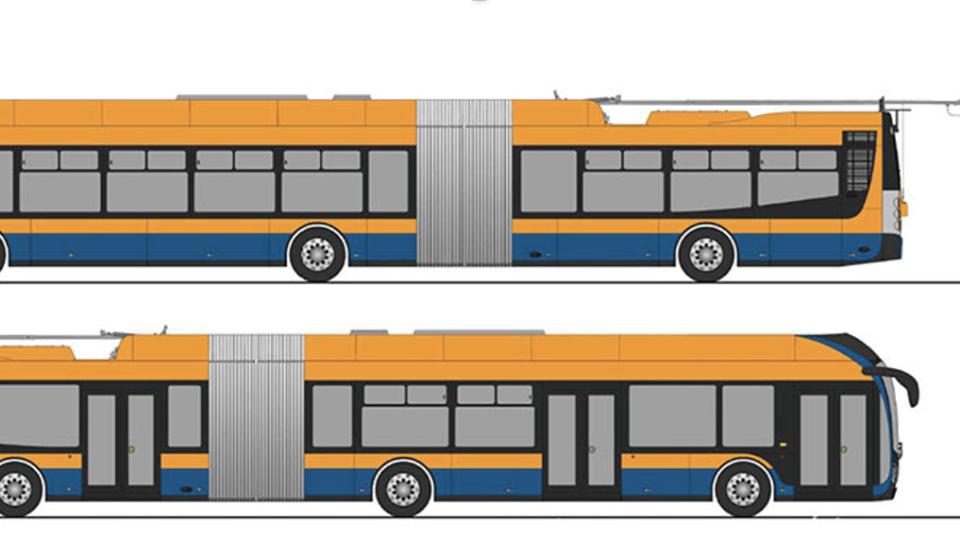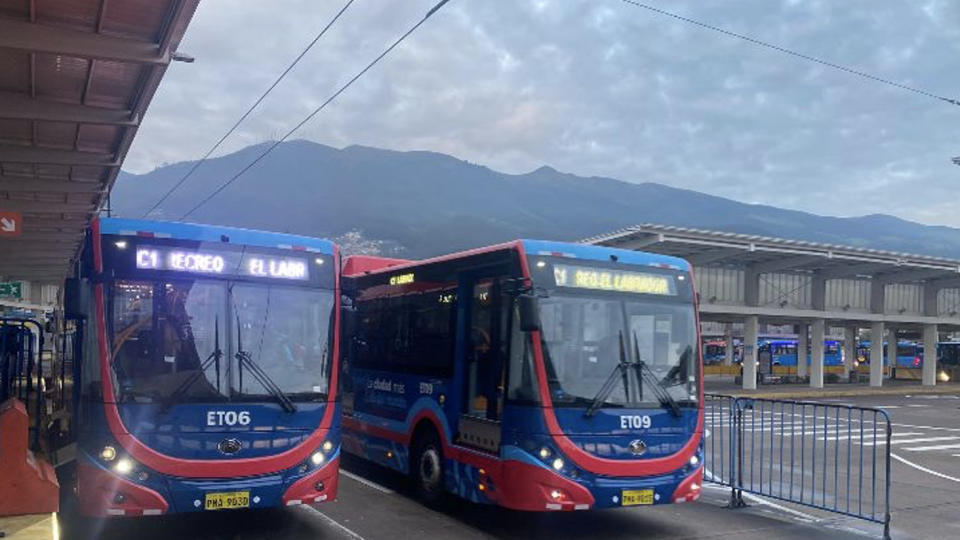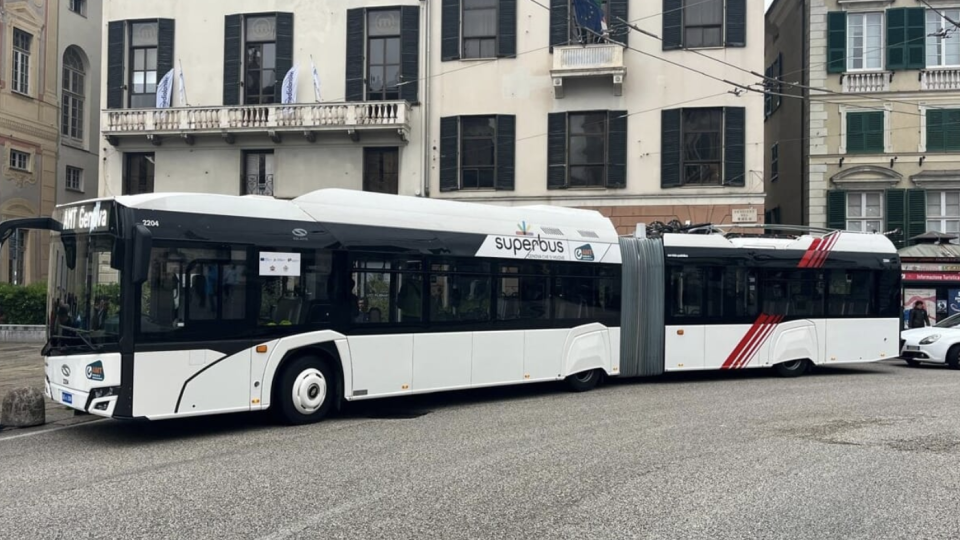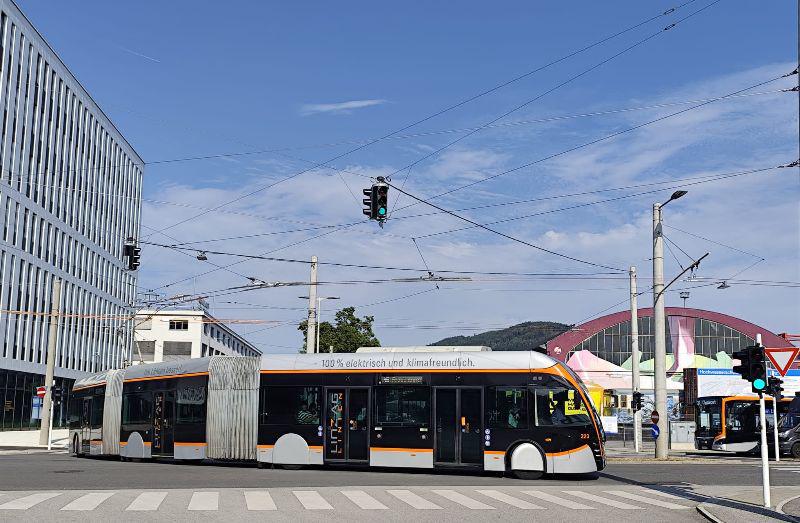New Stadler Tramlink in Geneva. 38 vehicles will join the fleet
Geneva has chosen Stadler Tramlink. 160 years after the first tram line was put into service, TPG (Transport Publics Genevois), operator of the Swiss city’s transport network, is vigorously pursuing its policy of expanding electric mobility. 38 units have been ordered from Stadler, winner of the international tender launched in 2021, with an option for […]
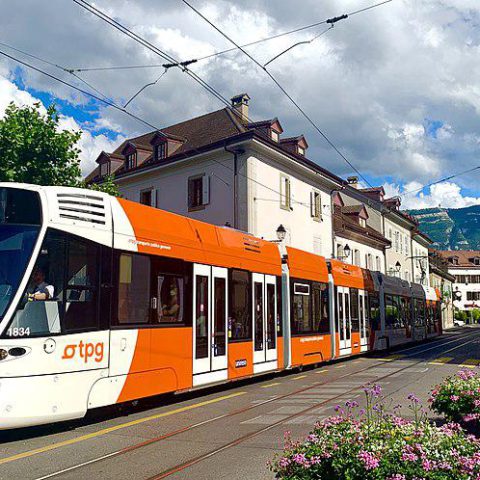
Geneva has chosen Stadler Tramlink. 160 years after the first tram line was put into service, TPG (Transport Publics Genevois), operator of the Swiss city’s transport network, is vigorously pursuing its policy of expanding electric mobility. 38 units have been ordered from Stadler, winner of the international tender launched in 2021, with an option for more, from 10 to 25 units. The planned investment amount is 180 mln. CHF.
New trams and new lines for Geneva, a city of 201,800 inhabitants, the second most populated city in Switzerland after Zurich, and the capital of the canton of the same name; in 2019 it was ranked among the 10 most liveable cities in the world, also thanks to a high-quality public transport system. Very positive is the future of Geneva’s tram network, managed by TPG (Transport Publics Genevois), an operator that is determined to decarbonise and improve the quality of life, as envisaged in the canton’s climate plan (Cap2030).
Geneva tram network, the construction of a sixth line
Adopted by the canton of Geneva, this plan envisages a fully electric fleet based on renewable energy. Significant investments have been made in public transport in Geneva, starting with the Leman Express network, obtained by exploiting disused railway lines, which has become one of Switzerland’s leading regional rail services, integrating connections between Geneva Lake, France and the city of Geneva.
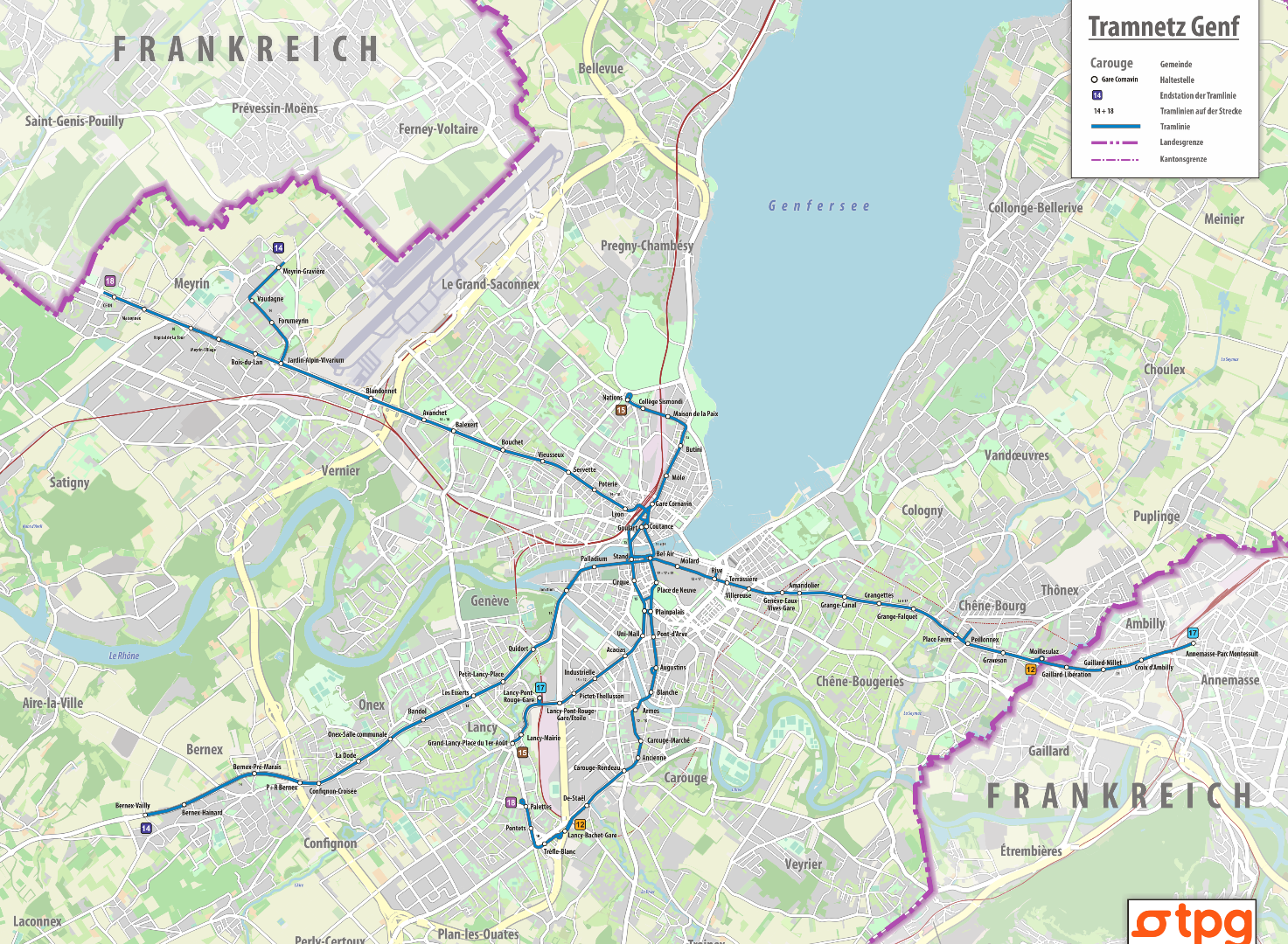
The tram network has undergone unprecedented expansion in just a few years. The first line, inaugurated in 1862 (today’s line 12) was followed by four more in the space of a few years, and the construction of a sixth line is planned, which will connect Le Grand Saconnex, (Airport area) to Ferney Voltaire, in France, in addition to the planned extensions of the network to Plan-les-Ouates, Saint-Julien-en-Genevois and Annemasse-Glières.
The tram network covers the territory very well: to the north-west it reach the French border at Meyrin (lines 14 and 18), crosses it to the east, penetrating the French municipality of Annemasse, touches it with the historic line 12 at Moillesulaz (direction Annemasse), 3 lines reach the populous and industrialised district of Lancy, home to one of the major railway stations, interconnecting with two stations of the regional railway service.
Line 12 was joined in 2004 by line 15 (Nations – Palettes), in2007 by line 14 ( Bernex – Meyrin), with the last extension in 2021, while line 18 (Palettes – CERN /Meyrin) was inaugurated in 2012; in December 2019, international line 17 (Lancy Pont Rouge – Annemasse Parc Montessuit) was opened.
The current development of the network is 33 km, while 80 stops are available to the public. Frequencies are excellent. On weekdays, lines 12,14,15 runs every 5-6 minutes, while lines 17 and 18 runs every 10-12 minutes. The service timetable is approximately 20-22 hours, both on weekdays and holidays, with the first departures at 4 a.m. and the last departures after midnight; on holidays the service is extended on some lines until 2.30 a.m. The travel times of the lines vary from 31 minutes on line 15 to 54 minutes on line 14.
103 vehicles in Geneva tram fleet
Today, the tram fleet consists of 103 vehicles: 23 two-car Duewag, manufactured by Vevey, 39 Bombardier Cityrunner, and 41 Tango built by Stadler. Stadler will therefore contribute to the renewal of the fleet with the new vehicles, which will replace the Duewag by 2030, when they will be close to 40 years of service.
The new vehicles, already in operation in Santos in Brazil, Rostock in Germany, Gmunden in Austria, and from 2021 on the Lugano – Ponte Tresa line, among others, will be built in the Valencia Stadler’s factory. The delivery of the first tram is scheduled for November 2024, and series deliveries will begin in 2025. Similar trams, but 25 metres long, are planned for ATM Milan.
The Geneva Tramlink will be bi-directional, 44 metres long, like the Tango, also produced by Stadler; the vehicle will be articulated on 7 modules, with a load capacity of up to 250 passengers, a very important value. Very capacious and fuel-efficient, the tram will be built of lightweight material and meet anti-collision standards. The maximum speed will be 80 km/h.
Numerous, though still being defined in the design phase, will be the doors. Their dimensions and low floor will allow passengers to board and getting off the tram quickly. There will be spaces for the disabled, and bicycles are also planned.
As with all new-generation trams, there will be an air-conditioning system for the driver’s cabs and the passenger environment. will also be very bright. All energy sources will be low consumption. There will also be video surveillance and a public address system, as is TPG’s practice.
The new trams will be used on all the lines of the network and will contribute to increasing the quality of public transport in Geneva, which is based on tram and trolleybus networks, another demonstration of how the two modes of transport can coexist perfectly.
By Stefano Alfano




